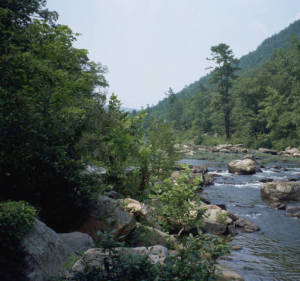One law has led to a scrub-up of America’s waterways. Dive in to the many ways rivers, lakes, and coasts have since benefited:

America’s waterways haven’t always looked so pristine, but thanks to the Clean Water Act, they are cleaning up nicely! (via FWS.gov)
Forty-odd years ago, two-thirds of America’s rivers, lakes, and coastal waters were too polluted for swimming or fishing.
When an oil slick on a Midwestern river caught fire, the public was fed up, prompting Congress to pass the Clean Water Act in 1972.
That groundbreaking law established wastewater standards for industrial factories and municipal sewage plants, and made it illegal for large facilities to discharge pollutants into navigable waters without a permit. It also required that states set clean water goals.
Since then, many grimy waterways have recovered—but not all. Plus, farm and urban runoff continue to dirty the water, so many obstacles and challenges remain.
It won’t be easy to change all this, but working toward another wave of progress for clean water is worth our collective while.
Learn More:
- Want the downlow of the act without the political jargon? Get your feet wet with this Summary of the Clean Water Act from the EPA
- Water is timeless, but clean water isn’t: check out this timeline of the Clean Water Act, from PBS
- Quench your questions about the Clean Water Act with these FAQ’s from American Rivers
The fine print:
- This segment was produced in partnership with Cornell’s Atkinson Center for a Sustainable Future




